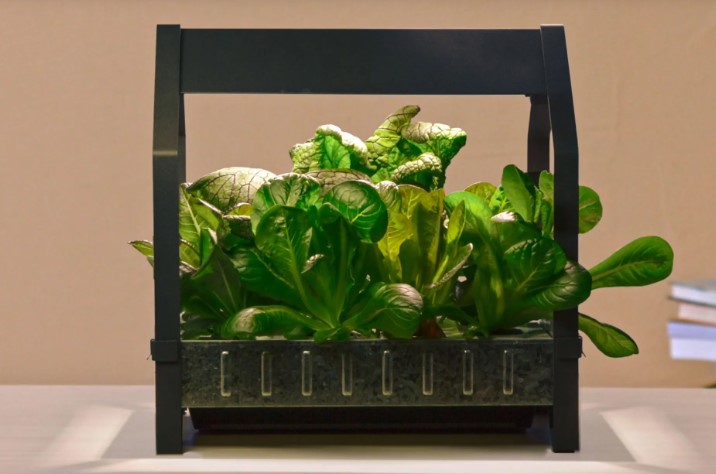
Hydroponic Planter: Revolutionizing Home Gardening
In today’s fast-paced world, where space is limited and environmental concerns are on the rise, hydroponic planters offer a revolutionary solution to traditional gardening. This article will delve into the intricacies of hydroponic planters, exploring their types, benefits, challenges, and the future prospects they hold.
Introduction
Hydroponic gardening is a method of growing plants without soil, using nutrient-rich water solutions. This technique has gained popularity in recent years due to its efficiency and sustainability. By eliminating the need for soil, hydroponic planters can be used in various settings, from urban apartments to commercial farms.
What is Hydroponic Gardening?
Hydroponic gardening involves growing plants in a nutrient-rich water solution, without soil. Instead of relying on soil for nutrients, plants receive essential minerals directly from the water, leading to faster growth rates and higher yields.
Relevance and Importance
In an era where urbanization is on the rise and arable land is becoming scarce, hydroponic gardening offers a viable solution to food production challenges. By maximizing space and resources, hydroponic planters allow individuals and businesses to grow fresh produce in any environment.
Types and Categories
Hydroponic planters come in various types and designs, each catering to specific needs and preferences.
Nutrient Film Technique (NFT)
NFT systems involve circulating a thin film of nutrient solution over the plant roots, allowing for efficient nutrient absorption.
Deep Water Culture (DWC)
DWC systems suspend plant roots in a nutrient solution, providing ample oxygen and nutrients for healthy growth.
Ebb and Flow Systems
Ebb and flow systems use a flood and drain method to periodically inundate plant roots with nutrient solution, promoting optimal growth.
Aeroponics
Aeroponic systems mist plant roots with a nutrient solution, allowing for maximum oxygenation and nutrient absorption.
Symptoms and Signs
Identifying common symptoms and signs of hydroponic gardening issues is crucial for maintaining healthy plants.
Nutrient Deficiencies
Yellowing leaves, stunted growth, and leaf discoloration may indicate nutrient deficiencies, which can be rectified by adjusting nutrient solutions.
pH Imbalance
Fluctuations in pH levels can lead to nutrient lockout and plant stress. Monitoring pH levels regularly can help prevent issues and maintain optimal plant health.
Root Rot
Excessive moisture and poor oxygenation can result in root rot, characterized by slimy, discolored roots. Proper drainage and aeration are essential for preventing root rot in hydroponic systems.
Causes and Risk Factors
Understanding the factors that contribute to hydroponic gardening issues is essential for successful cultivation.
Poor Water Quality
Unfiltered water sources may contain contaminants and pathogens that can harm plant health. Using purified water or installing filtration systems can mitigate risks associated with poor water quality.
Temperature Fluctuations
Extreme temperature fluctuations can stress plants and disrupt nutrient uptake. Maintaining stable temperatures within hydroponic systems is crucial for optimal plant growth.
Inadequate Lighting
Insufficient or improper lighting can hinder photosynthesis and impede plant growth. Investing in high-quality grow lights tailored to specific plant requirements can improve yields in hydroponic systems.
Diagnosis and Tests
Diagnosing issues in hydroponic systems often requires careful observation and testing.
Nutrient Solution Analysis
Regularly testing nutrient solutions for pH levels and nutrient concentrations can help identify imbalances and prevent nutrient deficiencies.
Root Inspection
Examining plant roots for signs of rot or discoloration can indicate issues with water quality or oxygenation within hydroponic systems.
Leaf Analysis
Analyzing leaf color, size, and texture can provide valuable insights into plant health and nutrient uptake efficiency.
Treatment Options
Addressing hydroponic gardening issues promptly is essential for preventing crop loss and ensuring optimal plant health.
Nutrient Solution Adjustments
Balancing nutrient solutions and adjusting pH levels can correct nutrient deficiencies and promote healthy plant growth.
Root Zone Optimization
Improving drainage and oxygenation in the root zone can mitigate issues such as root rot and nutrient lockout.
Pest Control Measures
Implementing integrated pest management strategies can help prevent pest infestations and minimize crop damage in hydroponic systems.
Preventive Measures
Proactive measures can help minimize the risk of hydroponic gardening issues and ensure consistent yields.
Regular Maintenance
Performing routine maintenance tasks, such as cleaning reservoirs and inspecting equipment, can prevent nutrient buildup and system failures.
Monitoring Environmental Conditions
Monitoring temperature, humidity, and lighting levels is crucial for maintaining optimal growing conditions and preventing stress-related issues.
Crop Rotation
Rotating crops regularly can help prevent nutrient depletion and soilborne diseases, ensuring long-term sustainability in hydroponic systems.
Personal Stories or Case Studies
Real-life experiences offer valuable insights into the practical application of hydroponic gardening techniques.
Sarah’s Success Story
Sarah, a busy urbanite, transformed her small balcony into a thriving hydroponic garden, producing fresh herbs and vegetables year-round.
John’s Commercial Venture
John, a seasoned farmer, adopted hydroponic farming techniques to diversify his crop production and increase profitability on his farm.
Expert Insights
Experts in the field of hydroponic gardening share their perspectives on the future of the industry.
Dr. Emily Carter
“Hydroponic gardening represents a sustainable solution to food production challenges, with the potential to revolutionize agriculture in urban environments.”
Professor Michael Wong
“As technology continues to advance, we can expect to see more efficient and affordable hydroponic systems tailored to diverse growing needs.”
Conclusion
In conclusion, hydroponic planters offer a sustainable and efficient alternative to traditional gardening methods, allowing individuals and businesses to cultivate fresh produce in any environment. By understanding the principles of hydroponic gardening and implementing best practices, growers can maximize yields and contribute to a more sustainable food system.
